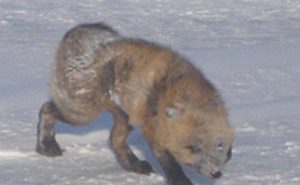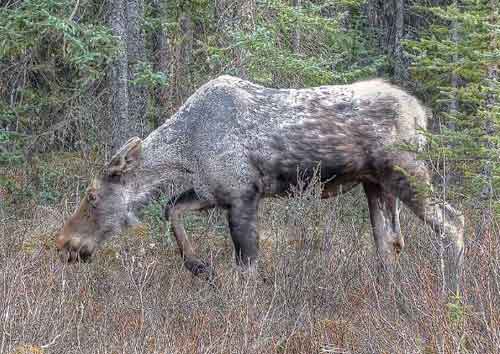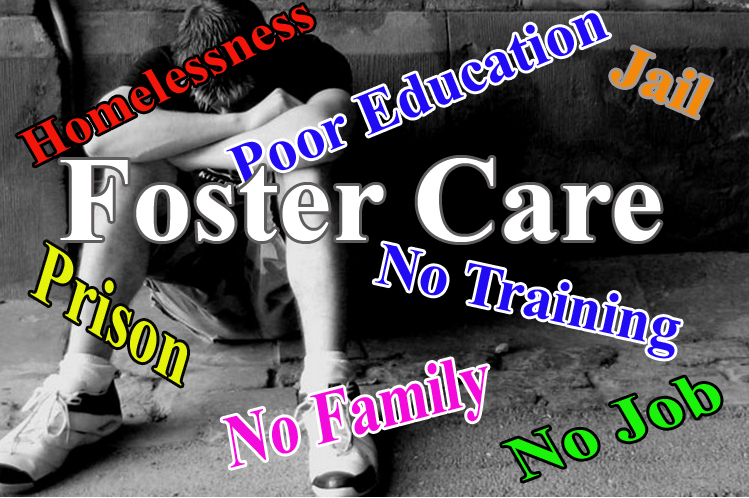
On January 6, 2017, a stray dog brought in to Anchorage from the Yukon-Kuskokwim (YK) Delta tested positive for rabies. The animal had been in foster homes in both Bethel and Anchorage, and had limited contact with humans or other dogs before its death. After receiving the test results, the Alaska Section of Epidemiology (SOE) immediately informed those persons who interacted with the animal to assess potential exposures. Alaskans should be aware of the health risks of rescuing dogs whose histories are unknown. In this case, the rescuers kept the dog quarantined after its rescue, both on the YK Delta and in Anchorage, which minimized potential rabies exposures.
In Alaska, rabies occurs most often in foxes, but can infect other mammals such as dogs, if they are exposed to a rabid animal. In certain regions of the state (including the YK Delta, North Slope, and western coast of Alaska), rabies is always present at a certain level in the fox population. This means any unvaccinated dog has the potential to develop rabies and present a risk to humans. Other regions of the state, such as Anchorage and along the road system, do not have locally-occurring animal rabies. Once exposed to rabies, an animal will incubate this fatal virus for a period of weeks to months before it will show any signs of being ill and ultimately dying.
Recommendations for Health Care Providers:
- Persons in contact with known or suspected rabid animals should be evaluated for possible exposure to rabies virus, and offered rabies post-exposure prophylaxis (PEP) as appropriate.
- Exposures of concern include any bites, or contact of a person’s broken skin or mucous membranes with the saliva or neurologic tissue from an infected animal (1,2). SOE staff are available to assist in exposure consultations: 907-269-8000 or after-hours, 800-478-0084.
- For persons not previously immunized, rabies PEP consists of four doses of human rabies vaccine, and a single bolus of human rabies immune globulin (HRIG) on a per-weight basis over a 2-week period (1,2). Schedules are altered for those who have already received a pre-exposure vaccination series or a prior PEP course, or who have immunocompromising conditions. Ideally, vaccine and HRIG are given concurrently on Day 0; however, if HRIG is not initially available, it may be given up to and including day 7 because antibodies do not develop until that point in response to vaccine.
- Rabies PEP is a medical urgency and should be started as soon as possible after exposure. There is no official timeframe within which rabies vaccine should be administered, beyond the recommendation that rabies PEP is not indicated once clinical signs occur which would typically be 1-3 months after exposure. No difference to antibody response has been reported in persons with a delay in HRIG of up to 5 days after vaccine was started (3).
- SOE does NOT supply rabies post-exposure prophylaxis, but human rabies vaccine and immune globulin can be ordered from the manufacturers or various distributors. Patients should contact their primary providers to see if their offices will order products, or call emergency departments to inquire about availability.
- A sample rabies post-exposure treatment sheet is available on the SOE rabies webpage: https://dhss.alaska.gov/dph/
Epi/id/Pages/rabies/
This case highlights the potential for dogs, and other animals, to translocate diseases around the state. Some diseases like rabies can have major consequences for humans; others, like canine parvovirus (a viral gastrointestinal illness), are only a concern for dogs.
Please consider these general guidelines for interacting with animals to minimize disease acquisition and transmission:
- Do not approach, touch, or interact with wild animals or any animal you do not know, especially if it appears to have no natural fear or caution around humans.
- If you find a stray or injured animal, call your local animal control office or law enforcement agency for assistance.
- Always wash your hands — and especially any wounds — thoroughly with soap and water immediately after touching any unknown animal.
- If an unknown animal bites or scratches you, or if you suspect an animal you interacted with was rabid, contact a healthcare provider promptly.
- If you rescue or foster domestic animals, especially animals from rural Alaska, have them vaccinated and then keep them under observation 7-14 days if possible before transporting. Once they have arrived in a new location, keep them separated from all other animals, and limit interaction with humans for a full 28 days after vaccination prior to final adoption unless the animals show signs of illness and then have them evaluated by a veterinarian as soon as possible.
- Before adopting a rescued animal, especially one from an area where rabies is known to occur (including the YK Delta, North Slope and western coast of Alaska), ask for details of its travel history (dates and location) and proof of rabies vaccination. If the animal traveled or was vaccinated less than 28 days ago, keep it separated from all other animals, and limit interaction with humans for a full 28 days after vaccination unless the animal shows signs of illness and then have it evaluated by a veterinarian as soon as possible.
- Be familiar with the common signs of rabies infection, including: drooling or foaming at the mouth; stumbling, falling, or losing control of limbs; slack or loose jaw; weakness and lethargy. If your animal demonstrates these signs, contact a veterinarian immediately to make plans to have the animal evaluated.[xyz-ihs snippet=”Adsense-responsive”]







